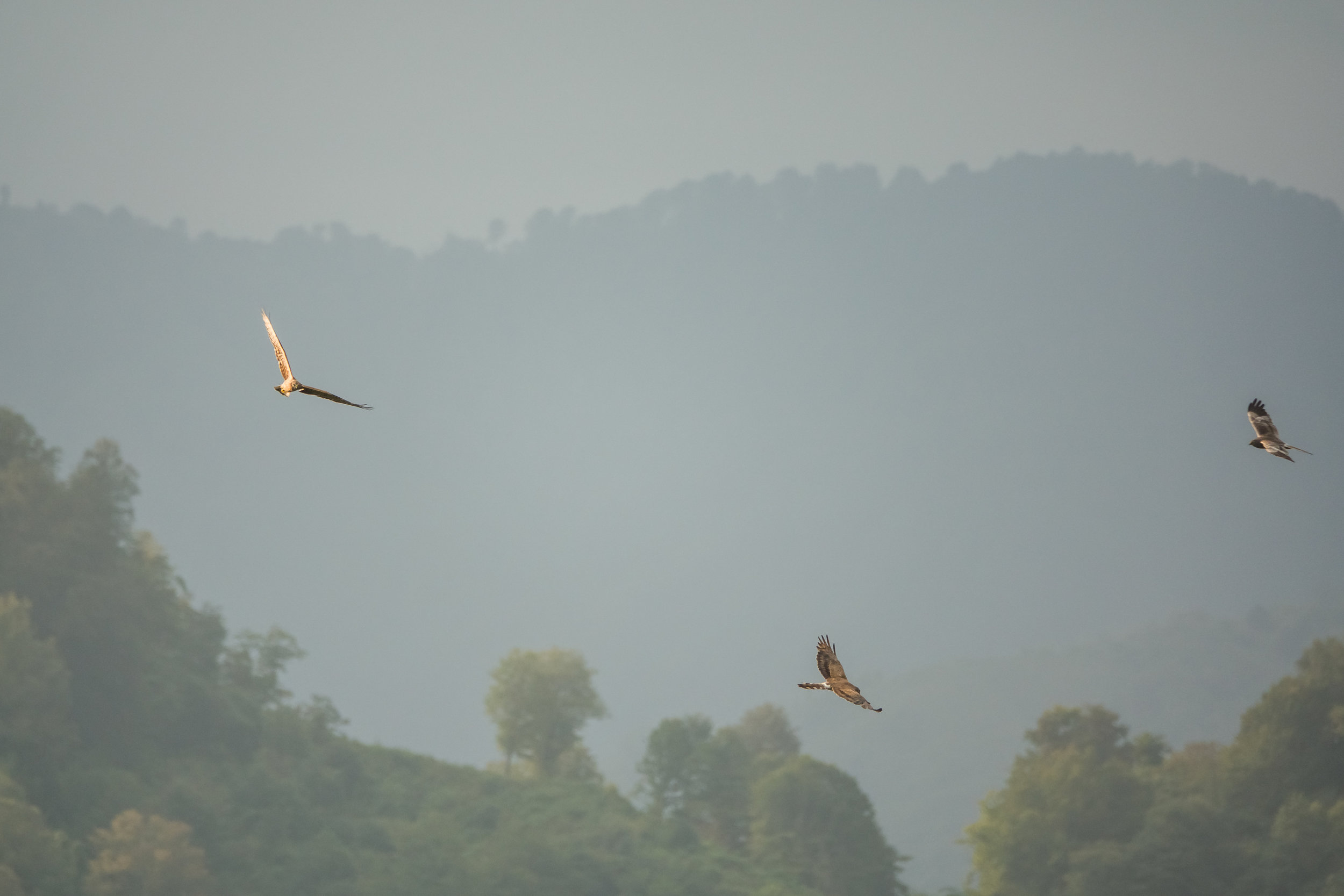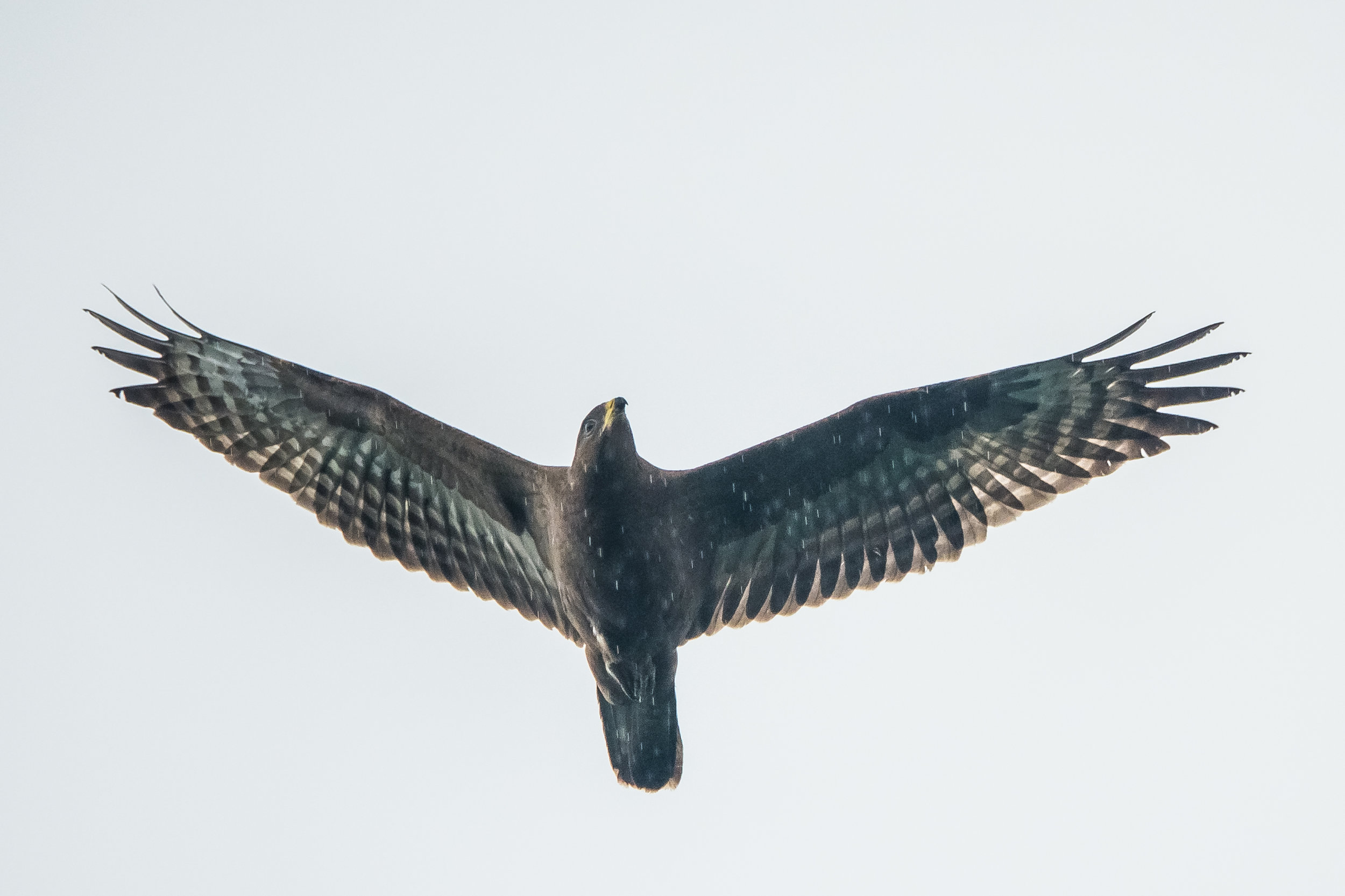Spring Count 2020
Coronavirus update — March 14th, 2020
It has been an unavoidable topic in recent weeks and right now it has also become something that the BRC feels a need to act upon: the COVID-19 virus. Running a count with a changing team of international volunteers is not responsible given the current situation. The safety and well-being of our counters and Georgian host families is of course a top priority for the BRC, therefore we decided to cancel the participation and accommodation of all project volunteers, who are not in Georgia already.
For now the spring count will continue to run with the five counters that are already present in Sakhakvasho, but we will keep a close eye on new developments in case more drastic measures should be taken.
In 2019 we carried out the first pilot spring count in the Batumi bottleneck, which revealed a very different composition of spring raptor migration vs. autumn raptor migration at Batumi, with record numbers of Black Kites and surprisingly low numbers of Honey Buzzard, to name just a few remarkable findings.
To see if the data collected in 2019 is representative, we are organising another pilot spring count this year. To make it happen, we are looking for volunteer counters.
“Spring is the time to observe endless streams of Black Kites migrating over the sea while they sporadically catch some fish, or watch them grab insects out of the air right above our heads. During the first half of the season you can see, more inland, streams of Steppe Buzzards accompanied by eagles, cranes and storks. Later on they will be replaced by Honey Buzzards and Harriers, even though we didn’t count that many of them last spring, we don’t know what the coming spring will bring us. To top it all, during spring time you won’t be counting raptors in silence. Soon passerines, such as Ortolan Buntings, will join the concert of birdsongs and the sound of our clickers. Hopefully we’ll see you this spring in Batumi!” - Tohar Tal and Diego Jansen, counters of spring 2019.
The view from the counting station in early spring. Photo by Tohar Tal.
The count will run from the 1st of March until the 25th of May. The BRC will take care of the logistics, but all costs (travel and 18 €/day for accommodation and food) would have to be covered by counters themselves. The season will be coordinated by an experienced migration counter Tohar Tal.
Please contact us (spring@batumiraptorcount.org) to let us know about your interest in participating in the spring count 2020. We will then get back to you with more details.
PS. As the spring pilot counts are run with a small team of people, each counter has more responsibilities and should preferably (though not necessarily) have previous experience with (raptor) migration counts. The counts will only be conducted from Station 1 (Sakhalvasho). Contrary to our autumn counts, there is no strict minimum or maximum number of days you can join us for.
Autumn Report 2019 published
Adult male dark morph Marsh Harrier. Photo by Bart Hoekstra.
The 12th season brought unprecedented numbers of Black Kites, a new raptor species for the BRC counts, and marked the start of an education project in collaboration with local teachers. You can read about that, and a LOT more, in the extensive report of the last season. Make sure to scroll all the way to the bottom for the behind-the-scenes gallery.
Have fun reading!
Half Season Report 2019
The 12th edition of the Batumi Raptor Count started differently than the previous ones:
We had a new counting station waiting for us.
We began the count 5 days earlier (on the 12th of August).
Weather in Batumi can be harsh and to hide from sun or rain, we need a shelter. While previously it has been four poles and a tarp or a simple wooden structure, this year we started with a brand-new observation platform at Station 1. Clearly more than just a shelter, the platform represents the importance of birdwatching in the area. We are grateful to the Ministry of Finance and Economy of Adjara and the Adjara Tourism Department for such project.
Why did we prolong the counting season? Our counting season is based on the passage time of seven focus species. After analysing our data from past years, we learned that we might miss the very beginning of the Montagu’s Harrier migration and decided to advance the start of the count by five days. So, did we see any Montagu’s Harriers during these first five days? Yes, we indeed counted 72 of them and 48 unidentified ‘ringtail’ harriers before the 17th of August, the former start of the count.
New Station 1 shelters both counters and visitors. Photo: Triin Kaasiku.
Educational activities at the new observation platform: Pia explaining about the importance of taking measurements when catching a bird to local young falconers. Photo: Triin Kaasiku.
The slow-paced beginning of the count is ideal to get to know the team, to refresh our identification knowledge and to learn – there’s plenty of time to discuss the identification of each bird. But since the first days of the count, we were eagerly recording the Honey Buzzard (aka HB) and Montagu’s Harrier numbers raising as they are the first ones to peak. Honeys started their push on the 22nd, when we counted more than 10,000 for the first time this season. With more favourable weather conditions (i.e. more clouds over the mountains) compared to last year, we witnessed a nicely building up migration for this species, with three days of more than 60,000 individuals passing the bottleneck between the 25th and the 28th of August.
At the peak of their passage, Honey Buzzards start migrating already early in the day. Photo: Juho Jolkkonen.
Montagu’s Harrier peaked on the 24th of August with 646 birds and 883 unidentified ‘ringtail’ harriers (of which most are probably Montagu’s). To the disappointment of many, the species did not have another peak day. Not that we are complaining, Montagu’s Harrier is generally a broad front migrant and we are more than lucky to see them concentrating in Batumi the way they do. But also the total count of this species is relatively low this year. Only future analysis can show if this is a trend following the indication of our recent publication, or just an incident of this year.
2011-2018 observations show a strong decline in juveniles of Montagu’s Harrier.
Always an enjoyable and adrenaline-filled moment: a flock of harriers! Photo: Juho Jolkkonen.
We like to think that there’s something for everyone in Batumi: the sheer amount of birds for the people who come for the first time, the harrier and eagle challenge if you come back next year. From then on, it’s the species diversity and challenging identifications that do the trick. Batumi does not disappoint: eagles came early this year, with a juvenile Imperial and some Steppe Eagles already in the end of August, making the days diverse and enjoyable. For Juho Jolkkonen, a volunteer from Finland who came for the first time, these were the highlights of his stay in Batumi:
“Very hard to pick the best memories, but one of the most unforgettable moments was the astonishingly beautiful juvenile Imperial Eagle in the west of station 1. Also, nice flocks of Montagu's and other harriers were beautiful and gave a good opportunity to learn to identify them.”
A juvenile Imperial Eagle passing Station 1 low and close. Photo: Juho Jolkkonen.
A juvenile Steppe Eagle overhead. Photo: Bart Hoekstra.
Already in the beginning of the count we received a “warning” from people tracking Black Kites (aka BK) along the flyway on which Batumi is situated, that the species is on the move earlier this year and as predicted, by the end of the month, we had counted more BKs than ever before during August. By then, we did not know it would not be the only BK record we break this year... With Black Kites advancing the timing of passage, it also makes it more challenging to handle the end of the HB peak, when streams are still massive but now with constantly changing proportions of Kites and Honeys.
Counting force of Station 1. Photo: Nick Watmough.
Five counters on the rehab station. Photo: Bart Hoekstra.
Another early for the season were the juvenile Honeys with dozens of birds registered already on the first day of September. This is a bird you really learn to appreciate with its strange but pretty looks and naive behaviour, often wandering around low and separately from the streams. It has been shown that their survival during the first autumn migration is mostly based on luck and fortunate weather circumstances - that makes you wish every one of them bon voyage for their journey to Sub-Saharan Africa.
Juvenile Honey Buzzard in rain. Photo: Juho Jolkkonen.
Post coffee counters at Station 2. Photo: Alberto Benito Ruiz.
Erik is always in the delta when a group photo is taken. Photo: Juho Jolkkonen.
Maja Maslać Mikulec from Croatia reflected on her second stay as a volunteer at the BRC:
“September, as last year, brought nice diversity of bird species and weather conditions. But no matter if you are burning your eyes with counting distant eastern streams on Station 2 on a bright sunny morning, or admiring the persistence of a group of Black Kites fighting the wind and rain on their urge to migrate south, the time on the stations, and also the entire stay in Batumi, always flies too fast. This year, it was very nice of the eagles to come sooner in bigger numbers to give a chance for more people to practice their ever-challenging ID-ing. The harriers are always fun to ID and they came in nice numbers to enjoy them, together with that dark morph Marsh, which I guess everybody saw the photo of.”
Did you not see the photos yet? The dark morph Marsh is one of the most admired plumages among the BRC counters, but these stunning birds mostly pass far from the reach of a camera. On the 12th of September the counters on the west side of station 1 were more than lucky to be able to witness (and photograph!) this beauty.
Could the light be any better?
Is the bird really that close?
OK, that might do. Photos: Bart Hoekstra.
Both BRC stations have their strong sides and species that are more probable to see on one or another. Station 1 is definitely the place for rollers which was once again made sure as we had the best day for rollers ever recorded, reaching 599 by the end of the official count time on 7th of September. One of this year’s BRC team calls, “Roller, roller, roller, roller”, was heard pretty often these days.
It is an old belief in the BRC that wearing blue attracts rollers.
If you wear blue in the end of August or early September, you can be quite sure a roller will pass soon. Photo: Juho Jolkkonen.
The BRC volunteers are not simply migration counters, we are a group of people with different backgrounds, brought together by the birds, but everyone adding their special something to the team, creating a unique atmosphere. Axelle Denis and Karine Drost, our full season French volunteers, have been spicing this year’s count with music. The first half of the season ended with their premiere of a Batumi chanson at the Green Café, which from then on could be heard being sung by the counters on station while recording the spectacle of raptor migration:
“You think it’s impossible to count more than one million,
Come to Batumi we are a team of champions…”
Karine & co(w). Photo: Juho Jolkkonen.
We can handle both hot temperatures and heavy rain. Photo: Pia Fetting.
Pia Fetting contributed to making this report. Thank you!




















